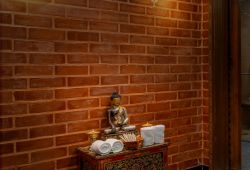Festivals
In Nepal
Nepal is a land of mystique, diversity, and deep-rooted traditions, where festivals are celebrated with unbridled joy and reverence.
Each festival in Nepal has a unique story to tell, woven intricately into the fabric of Nepali culture, revealing the country’s deep connection to its history and spiritual beliefs. If you want an authentic and immersive experience of Nepali culture, this comprehensive guide to Nepal’s festivals throughout the year is your ultimate resource. As we look through the rich tapestry of Nepal’s celebrations, we will uncover the captivating stories, traditions, and rituals behind each festival.
List of Major Festivals in Celebrated in Nepal
Nepalese people celebrate as many festivals as there are days in a year. Of course, some are lesser known and confined within an ethnic group, while some are celebrated nationwide. Check out this list of some major festivals celebrated in Nepal and get a chance to immerse yourself in the sights, sounds, and vibes of Nepal’s festivals. So come along and join the celebration!

Dashain
Dashain, also known as Vijaya Dashami, is the biggest and most important festival celebrated in Nepal, typically occurring in October. The festival symbolizes the triumph of good over evil and is celebrated by both Hindus and Buddhists.
The festival lasts for fifteen days, with the main celebrations occurring on the 10th day. The first nine days of Dashain are known as Navaratri, during which people worship the goddess Durga and her various forms. On the tenth day of the festival, Vijaya Dashami, elders in the family apply a mixture of rice grains, yogurt, and vermillion on the foreheads of younger members of the family. This is known as tika and is considered a blessing from the elders.

Tihar
Tihar is a five-day festival also known as Dipawali or the festival of lights, is a dazzling celebration that illuminates the entire country of Nepal with a mesmerizing display of lights and colors. On the first day, Kaag Tihar, the flying crows are worshiped and offered rice. The second day, Kukur Tihar, the dogs are worshiped and offered food.
The third day of Tihar is called Laxmi Puja. The houses and shops are decorated with colorful lights, diyas, and marigold garlands to welcome the goddess of wealth, Laxmi, who is believed to bring good fortune and prosperity.
The fourth day of Tihar is called Govardhan Puja. On this day cows and oxen are worshiped as they are considered sacred animals in Hinduism. The people in the Newar community celebrate this day as Mha Puja and Nepal Smabat (Newari New Year).
The fifth and final day of Tihar, Bhai Tika, is a day of sibling love and affection. Sisters prepare elaborate tika plates with colorful powders, flowers, and sweets, and offer them to their brothers as a symbol of love and gratitude.

Chhath Parva
Chhath Parva is a vibrant and colorful festival celebrated with great zeal and enthusiasm in Nepal, especially in the Terai region and some parts of the Kathmandu Valley. The festival is dedicated to the worship of the sun god, Surya, and his sister Chhathi Maiya. The festival is celebrated over four days.
During Chhath Puja, people gather by rivers, lakes, or other water bodies to offer prayers to the sun and seek his blessings for prosperity and good health. The rituals involve fasting, abstinence, and bathing in the holy waters. The first day of the festival involves the purification of the body and the mind by taking a dip in the river and consuming a special diet.
On the second day, known as Kharna, devotees observe a strict fast throughout the day and break it in the evening by offering kheer, puri, and bananas to the sun god. The third day, known as Sandhya Arghya, is the most significant day of the festival, where devotees offer prayers to the setting sun and the rising moon. The fourth and final day of the festival, known as Bihaniya Arghya or Usha Arghya, involves offering prayers to the rising sun and breaking the fast.

Maghe Sankranti
Maghe Sankranti, also called Maghi or Makar Sankranti, is one of the most significant festivals in Nepal and is celebrated by the Tharu community. The festival is observed on the first day of Magh.
Maghe Sankranti is especially known for its special food items, especially sweet dishes made from sesame seeds, nuts, jaggery, rice flour, and molasses. Til ko laddoo, Chaku, sweet potatoes (Sakkhar Khanna), etc. are some of the popular dishes prepared during the festival. The holy town of Sankhu in Kathmandu Valley is a popular place for devotees to take a holy dip in the river. Overall, Maghe Sankranti is a joyous festival that brings people together, and it celebrates the beginning of a new harvest season and the renewal of life.

Lhosar

Maha Shivaratri
Maha Shivaratri is a Hindu festival that is celebrated in Nepal and other parts of the world. It falls in February or March, depending on the lunar calendar, and it is one of the most important festivals in the Hindu calendar.
Maha Shivaratri is dedicated to Lord Shiva, known as the destroyer of evil, and the transformer of the universe. There are long queues of people waiting for their turn to worship the lord in one of the many major Shiva Temples all over the country, including the Pashupatinath Temple, Doleshwar Mahadev Temple, Kumbheswar Temple, etc.

Holi
Holi is a festival of colors where people splash different colors on each other to celebrate the victory of good over evil. Colors symbolize life, and coloring gives life to our wishes and celebrations, making Holi a festival of celebrating life, love, and passion.The history of the origination of the Holi festival can be traced back to Hindu Mythology, according to ‘Vishnu Purnan’ a religious text that talks about an evil king Hiranya Kashyap, who is evil through his deeds conducted a long penance for the Lord Brahma.
Due to modernization, a little change in the way of the celebration can be observed, now we not only splash dried colors but also water balloons, pichakaree are becoming popular mainly in the urban areas, where people from the roof-top of their houses splash water towards passerby.

Eid al-Fitr
Eid al-Fitr is one of the most significant festivals celebrated by the Muslim community in Nepal. The festival marks the end of the holy month of Ramadan, which is observed by Muslims worldwide through fasting and prayer. This celebration is believed to have been started by prophet Muhammad himself.
Eid al-Fitr is celebrated on the first day of the Islamic month of Shawwal, which follows the sighting of the crescent moon. The date of the festival may vary by a day or two in different parts of Nepal, depending on the sighting of the moon.
In Nepal, Eid al-Fitr is typically celebrated with a lot of enthusiasm and joy, with people exchanging gifts and greeting each other with the phrase “Eid Mubarak.”

Buddha Jayanti
Buddha Jayanti, also known as Vesak or Buddha Purnima, is an epic celebration that honors the life, teachings, and spiritual legacy of Gautama Buddha, the enlightened one. This globally recognized festival, which falls on the full moon day of Baishakh, marks the birth, enlightenment, and death of Lord Buddha.
From the break of dawn, devout followers flock to Buddhist shrines to offer prayers, light incense sticks and candles, and chant mantras in honor of the revered Buddha. The entire atmosphere is infused with the aroma of burning incense, and the hypnotic chanting of mantras fills the air. The festival’s spirit can be experienced in its full glory in places like Lumbini, Bouddha, Swayambhu, and other major Buddhist monasteries, where thousands of devotees gather from all corners of the world.

Tiji Festival
The Tiji Festival, also known as the “Tenchi Festival,” is a grand cultural celebration that takes place annually in the walled city of Lo Manthang, located in the remote Upper Mustang region of Nepal. The festival is a vibrant display of the region’s unique culture, traditions, and religious heritage, deeply rooted in Tibetan Buddhism. It is held over three days in May and attracts a large number of domestic and international tourists.
The Tiji Festival marks the victory of good over evil, as it symbolizes the triumph of the deity Dorje Jono over his demon father, who brought chaos and destruction to the kingdom of Mustang. The monks of the local monasteries perform a series of traditional masked dances, known as “Chham,” to depict the story of Dorje Jono and his battle with the demon.

Janai Purnima
Janai Purnima, also called Gunhi Punhi or Kwati Purnima, is a traditional festival celebrated in Nepal on the full moon day of Shrawan (July-August). The festival involves changing the sacred thread, known as Janai, worn across the chest or torso by the men of Brahmin and Chhetri communities. The changing of Janai is considered to purify the body and soul and is believed to protect them from negative energies and evil spirits.
The day begins with an early morning bath in sacred rivers and lakes, followed by puja (worship) performed by the priests on the Janai. Then, the old Janai is discarded as they put on a new one across their torso or chest. Kwati, a soupy dish made from nine different types of beans, is a major delicacy of this day, which gives Janai Purnima the name of Kwati Purnima.

Gai Jatra
Gai Jatra is a festival that defies definition. It’s a cultural celebration that is both poignant and humorous, solemn and festive, mournful and joyous. The festival is celebrated in Nepal during the month of Bhadra (August-September), and it is a time when the Newar community comes together to remember and honor those who have passed away in the previous year.
The festival is a way of coping with grief and expressing sorrow. Families dress up in colorful costumes and lead a cow or a young boy dressed as a cow through the streets. This symbolizes the journey of the soul to the afterlife, where cows are believed to lead the way. The festival is also an opportunity for families to express their grief and come together to support one another.

Haritalika Teej
Teej is a joyous and colorful festival celebrated by Hindu women in Nepal, commemorating the reunion of Lord Shiva and his beloved wife, Parvati. This three-day festival, held in the month of September, is a time for women to honor the sacred bond of marriage and revel in the beauty of love and devotion.
Haritalika Teej is a significant festival in Nepal, and the celebrations are grand and colorful. The streets are filled with women dressed in red sarees, and the atmosphere is lively with music, laughter, and joy. It is an opportunity for women to come together and celebrate sisterhood, the bond of marriage, and the rich cultural heritage of Nepal.

Indra Jatra
Festival Celebrated in Kathmandu
Indra Jatra is a major annual festival celebrated in Nepal, especially in the capital city of Kathmandu. Indra refers to the god of Heaven, while Jatra refers to Procession. Thus, “Indra Jatra” is a joyous festival and a procession held in honor of the Hindu god Indra.
The erection of the Yasin or Linga in Kathmandu Durbar Square (Basantapur) starts the festival which is followed by chariot procession of three living goddess Kumari and living gods Bhairav and Ganesh. The major attraction of Indra Jatra besides the chariot procession includes the masked dance of Majipa Lakhey, Pulukishi, Sawa Bhaku etc.

Gunla: The Scared month
of Lord Buddha
Festival Celebrated in Kathmandu
The fifteen days before the full moon of August or early September, and the fifteen which follow, comprise the sacred lunar month of Gunla, the holiest period of the Buddhists. During these auspicious thirty days the Buddhists devote themselves with great enthusiasm to fasting, penances, pilgrimages and holy ceremonies with a typically Newari climax of feasting, merrymaking and rejoicing.

Rato Machhindranath Rath Jatra : The Chariot ride
of Red Machhindranath
Festival Celebrated in Lalitpur (Patan)
One of the most important festivals and also one of the most spectacular of all the festivals to be marked in Patan takes place in April or early May when the massive chariot of Rato Machhendranath is hauled through the narrow streets of Patan. After the completion of Seto machhindranath jatra in Kathmandu in Kathmandu, the jatra of Rato machhindranath begins at Patan. Lord Machhindranath is taken as the patriot deity of the valley and is worshiped and revered as Karunamaya – the Bodhisattva of compassion. The festival ends with the public display of a garment studded with precious stones, emeralds and other precious materials.
Learn more about Rato Machhindranath Jatra

Sithinakha: The birthday of the warrior god Kumar
Festival Celebrated in Lalitpur (Patan)
This time of the year is marked by the important festival for the Newar inhabitants of Kathmandu, Lalitpur and Bhaktapur – Sithinakha. It is widely celebrated by worshiping the ancestral god of one’s clan. The religious ceremony is followed by a sumptuous feast. This day is also marked by cleaning the sources of water by the valley dwellers.

Biska: Jatra
Festival Celebrated in Bhaktapur
Biska: Jatra, or Bisket Jatra coincides with the Newari New Year around the month of April. It is a festival of crowds, noise, and celebration that brings everyone out in the streets. The major aim of celebrating this festival is to bring the city welfare and fertility for the coming year. They do so by mating Lord Bhairav with Goddess Bhadrakali. The former represents the sky and the rain, while the latter represents the earth. These two must be brought together for the prosperity of the city.
The statue of Lord Bhairav is installed inside a massive chariot(rath) that is built every year in the Taumadhi Square and his vehicle Lord Vetal is attached to the tongue in front. There is a massive competition between men of the upper area and the men of the lower area. It amazingly finds its way to the steep streets to where it meets the Goddess Bhadrakali. It is regarded as a very violent festival and there are policies every year to manage the huge crowd.

Digu Pooja
Festival Celebrated in Bhaktapur
It is a festival celebrated to show honor to the patriarchal lineage deity, Digu Dya. It falls around April, and every year families gather in their own specific deity of Digu Dya and perform sacrifices and have feasts.






